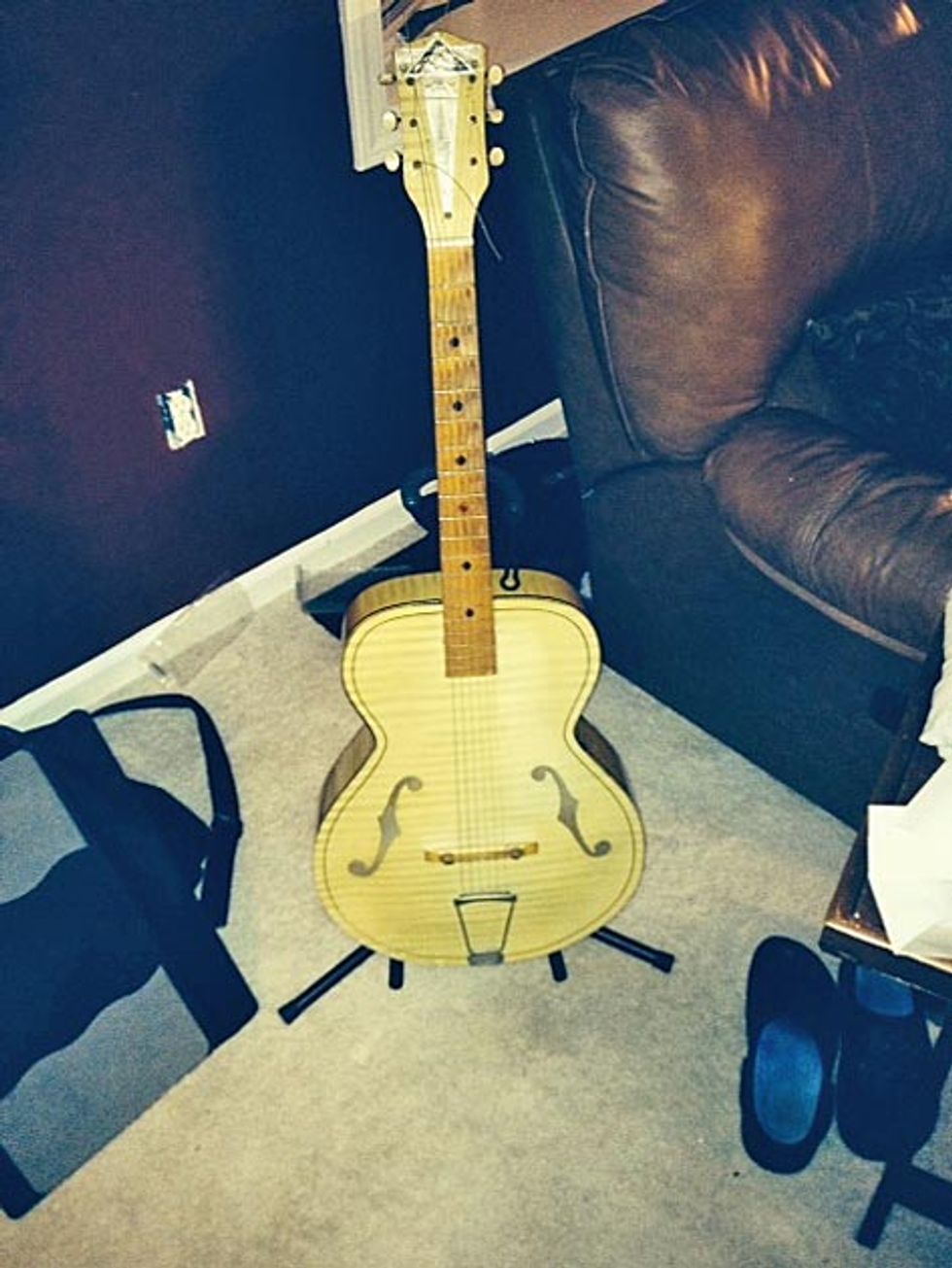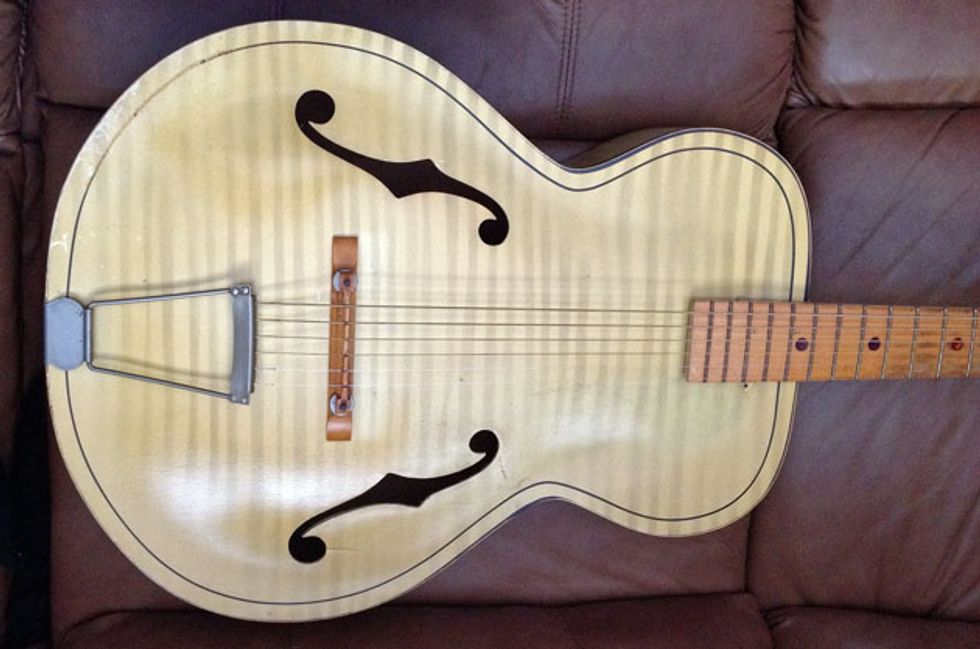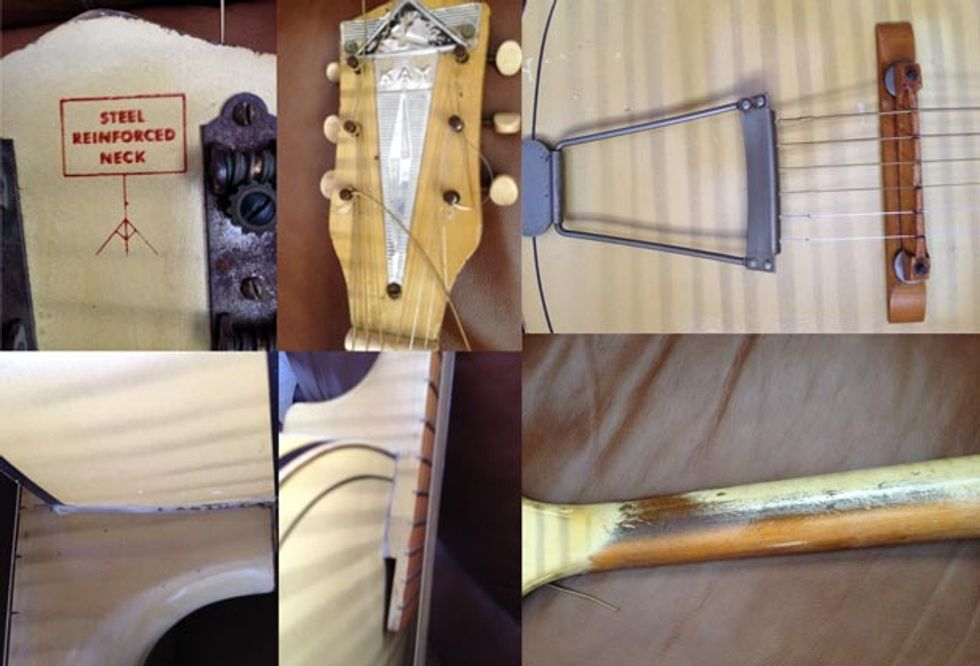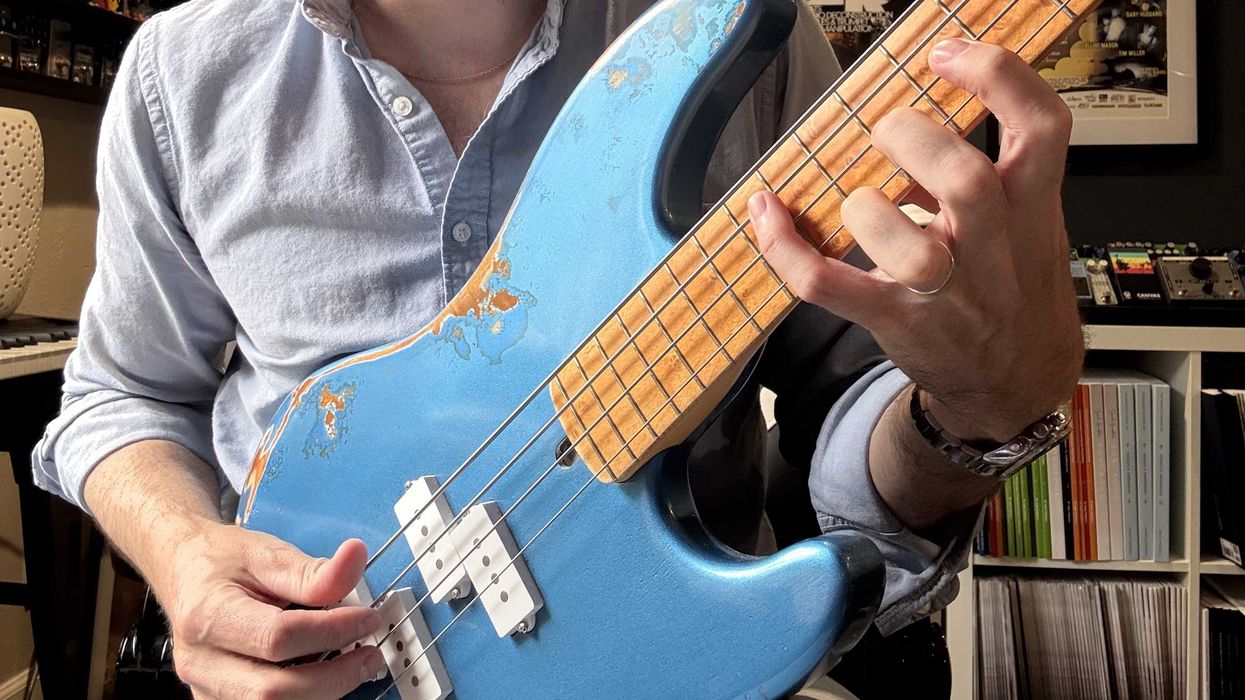Hey Zach,
I have someone interested in purchasing this guitar, and I can’t find anything out about it. As you can see, it has damage to the neck and a few cracks around the f-holes. The number I can see inside through an f-hole is “L 5573.” Could you please tell me what I have and what it’s worth?
Thanks,
Joseph in Richmond, Kentucky
Hey Joseph,
Cool guitar! Well, we know right away that this is a Kay guitar from the metal plate on the headstock. Along with Harmony and Washburn, Kay was one of the mass producers of guitars between the 1930s and 1960s in the Chicago area. These large instrument manufacturers were also known as “jobbers” and “house brands” because they produced guitars for many other retailers and distributors.
Kay can trace its roots back to 1890 when the Groeschel Company in Chicago, Illinois, began producing bowl-back mandolins. In 1918, Groeschel changed to the Stromberg-Voisenet Company and became known for laminating wood tops and backs on instruments.
Caption here
Henry Kay Kuhrmeyer bought the Stromberg-Voisenet Company in 1928 and made a splash by introducing some of the first electric guitars and amps. Three years after purchasing the company, Kuhrmeyer renamed it Kay Musical Instruments and began mass-producing a variety of stringed instruments. By the mid-1930s, Kay was producing nearly 100,000 instruments a year!
Since Kay focused on building a lot of instruments, most of their guitars were of the budget and intermediate grade—the familiar quality versus quantity axiom. All Kay guitar model names consisted of a “K” prefix that was followed by a three or four digit number and a nickname. (The K161 Thin Twin and K8980 Upbeat are a couple of examples.) Unfortunately, this number was rarely, if ever, stamped anywhere on the guitar. The number inside your guitar is actually a serial/production number, which doesn’t really help us in either dating or identifying the guitar.
So, this leaves referencing old Kay catalogs, price lists, and Kay books to determine what you have. I found your guitar in a 1960 Kay catalog, and the model appears to be a K6868 Style Leader. According to catalog specifications, it has a laminated “crack-proof”maple body that’s fully arched and super-auditorium sized, a slim steel-reinforced neck with a maple fretboard, and a honey blonde finish with “attractive graining.” (Kay also made a sunburst-finished companion model called the K6858.) Your guitar appears to be missing the brown celluloid pickguard these models were outfitted with. The Style Leaders remained in Kay’s catalogs until the late 1960s and had a final MSRP of just $39.95!
Kay thrived through the booming guitar years of the 1960s and was sold to Valco in 1967. However, financial instability became prevalent and Valco/Kay went out of business in 1968. The rights to the Kay name were auctioned off and import guitars bearing the Kay name (made mainly by Kawai in Japan) began appearing in the U.S. Since then, Kay has been sold several times, but is still active and currently offers a line of intermediate-priced guitars.
The metal headstock plate certainly tells us it’s a Kay, but the company rarely indicated the model name or production date anywhere on their instruments. The unfortunate neck damage shown here brings the value of this guitar down to the lower end of the range for Style Leaders.
Aside from a few electric archtops like the Barney Kessel and Upbeat models, most Kay guitars remain relatively low in value and undesirable to collectors. These Style Leader archtops are typically worth between $200 and $400 today in excellent condition. Because of the damaged neck and cracks on the body (I guess it isn’t so “crack-proof”), I would estimate it to be toward the bottom of that value range.
So there you have it: Very few Kay guitars from this era are treasures in terms of monetary value, especially when it comes to the acoustic models. However, they certainly bring many of us back to our younger years since these were the guitars many of us learned to play on. That is a treasure unto itself and could very well be the reason someone wants to buy this guitar from you.
















